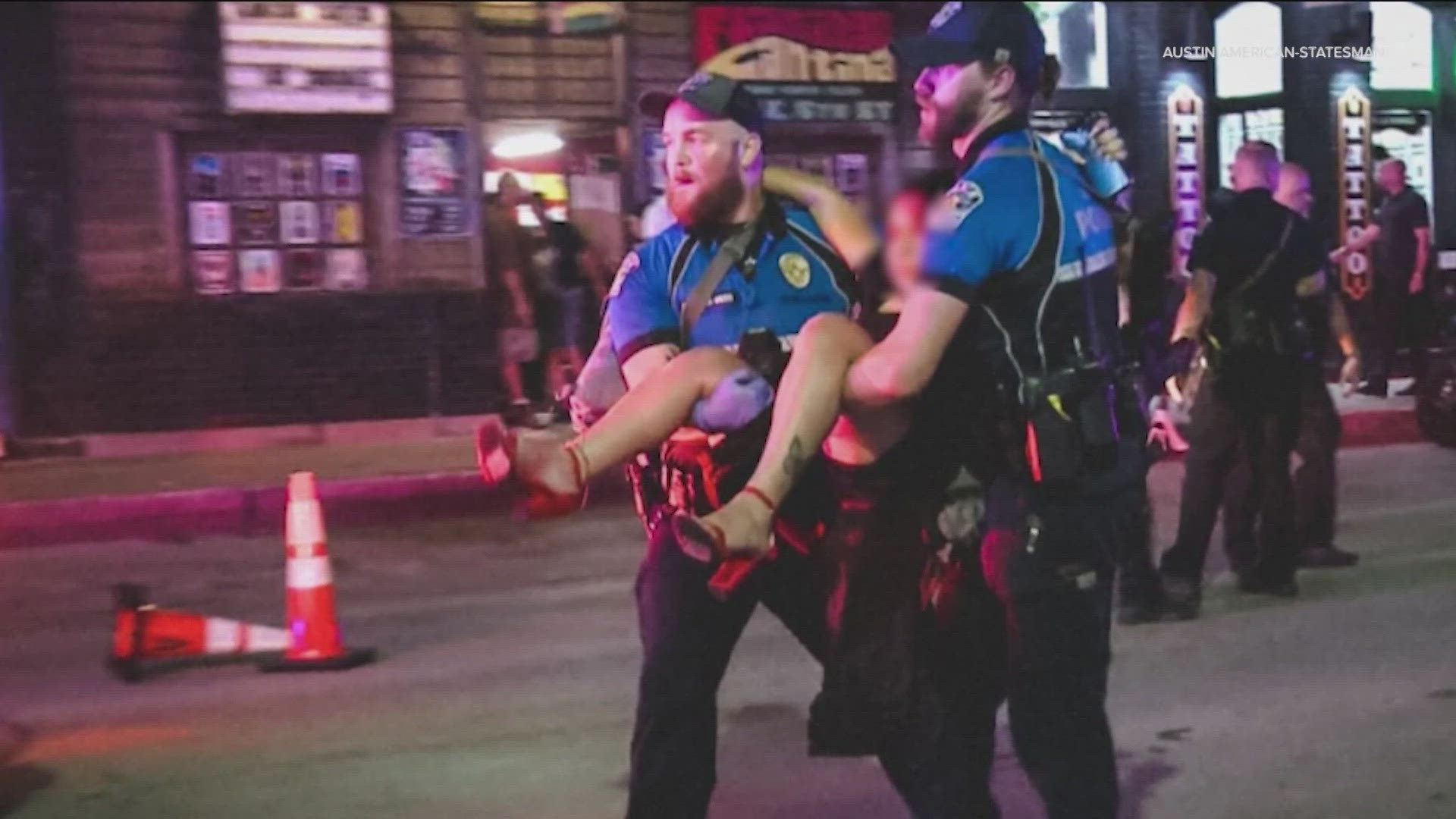AUSTIN, Texas — It’s been exactly three years since a mass shooting on Sixth Street in Downtown Austin left one person dead and several injured.
“I’ll never forget that Saturday where I woke up to find, you know, hear on national news that there had been a mass shooting on Sixth Street,” Kathie Tovo, a former Austin City Council member and current mayoral candidate, said.
On June 12, 2021, then-19-year-old De’Ondre White opened fire on Sixth Street on a crowded night. He was sentenced to 30 years in prison on 14 counts of aggravated assault and the murder of 25-year-old Douglas Kantor, who was visiting from out of town.
Since the shooting, the city and public safety departments have been working to make the street safer. Back in 2021, the Austin City Council proposed the Safer Sixth Street Initiative.
“I just felt very strongly that the city needed to immediately take some actions to make Sixth Street safer,” Tovo said.
Goals of the Safer Sixth Street Initiative
The city of Austin’s Development Services Department (DSD)’s Nightlife and Entertainment Services team outlined three main goals to make the street safer, including public space design, bar operator partnerships and diverse uses and activities.
With the public space design, they replaced all of the old lighting in the area and recommended that businesses on the street install their own security lighting. A goal they haven’t completed yet: making the sidewalks wider to accommodate more people.
The initiative also established more training and communication between employees on Sixth Street and public safety departments. The city gave its first active shooter and Stop the Bleed training in April last year, with 35 bar owners and staff. Since then, there have been more active shooter trainings, as well as one session on naloxone/overdose awareness. The city plans to keep offering these training courses throughout 2024.
Establishments on Sixth Street will also have the ability to become accredited if they add several safety measures and participate in required trainings.
The DSD also launched its safety pilot program, called Sip Safely, back in April. It raises awareness about drink spiking and educates people on prevention methods.
Public safety departments' involvement
Since the shooting, Austin-Travis County EMS (ATCEMS) has been working on its response downtown. In the past three years, the agency has added smaller units called RTFs, which can move through the downtown crowds much more effectively than large ambulances. The RTFs are in place three days a week, from Thursday to Saturday, when Sixth Street is closed off to vehicle traffic.
“They are mobile,” Stephen White, an ATCEMS assistant chief, said. “They can respond as soon as the call comes in. It has significantly reduced how long it takes for us to respond to a patient.”
ATCEMS is also looking into expanding its operations to mirror what it does downtown during South By Southwest (SXSW). During the festival, it has a field hospital set up to treat people onsite, which officials say cuts down on ambulance use overall.
“They get to cancel about 30% of the ambulances, so we're not using as many ambulances to respond downtown as we used to, which then leaves those ambulances available to run other calls,” White said.
Could guns be banned on Sixth Street?
When Tovo was on city council, she was looking to see if it would be possible to monitor guns on Sixth Street. She said she asked the legal department to look into what they had the ability to do, but Texas law made it difficult.
“I think [something] that is really key to making that area safer would be to explore ways that the city can legally reduce the number of guns in the area on the weekend,” Tovo said.
Tovo is calling on the current city council members to continue the work that was started while she was there – to make sure something like what happened in 2021 doesn’t happen again.
“I would really like to see our current city council seeing what the progress is and seeing what remains to be done,” Tovo said.

